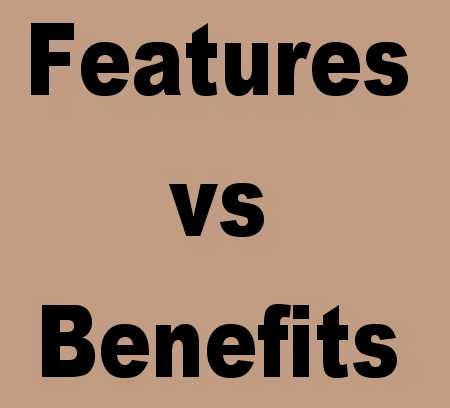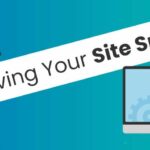When it comes to marketing, there are two primary ways to describe your offering. One way focuses on what your offering does, known as its features. The other is how it will improve your user or prospect’s life, known as its benefits.
As described in the article “The Most Obvious Marketing Mistake – Selling on Features“, many nascent business owners spend too much time listing features such as all the bells and whistles when they interact with their potential customers, and not enough time trying to connect the features to the benefits which is the part that the prospect really needs to understand. Left to their own accord, users and prospects often fail to make the proper correlation between the features and the benefits. Good marketers don’t leave benefits to chance and make a concerted effort to make the connections for the potential customer.
Features
Features describe the attributes of a product. For example, Oculus Go is a headset that the user wears. When they describe the high-resolution display, tracking features of the device, or the size of its memory, they are talking about its features.
What I see in a lot of marketing material for Business to Business companies are data and fact sheets that list all the features. That is because many
Benefits
Benefits describe what a user or prospect will gain by using the product or service. While the features describe the “what”, the benefits describe the “why”. By connecting a feature to its benefits, it connects the features to a person’s desires.
In the Oculus example, one of their ads said:
“Oculus enables the sensation of presence and the magic of presence changes everything.”
The “sensation of presence” is more of a feature and the “presence changes everything” connects it to the benefit.
The benefit answers the age-old question “So what?” in the user or prospect’s mind after they see a list of features.
It is always advisable for a business to have a unique value proposition or something that makes them different from the competition.
For example, if you are a dry cleaner you don’t need to describe the benefit for each of your features. However, if your blue ocean feature is that you provide a home pick up and delivery service, you had better make that benefit abundantly clear. You could show how it will save the customer valuable time and aggravation dropping off and picking up their clothes so they can spend that time more productively, such as at their child’s after-school event.
When you have something that makes your business unique, don’t expect the customer to simply look at your features such as your pick up and delivery service, and make the leap to how this will benefit them, you must show them.
Sometimes it is hard to define all of a feature’s benefits.
The problem with defining benefits is that as marketers, you know your product or service inside and out, and you often can’t appreciate the perspective of all potential customers. As a result, you make certain assumptions about your user or prospect that are not always true. Consequently, as the marketer, you can suffer from what is often referred to as the Curse of Knowledge.
In the previous example of a dry cleaner with a home pick up and delivery service, you may assume your service will allow customers to simply save them time, which may apply to some customers. However, what if the customer was visually impaired? This would make driving impossible. Or what if the customer lived in the city and didn’t own a car, they would have to rely on an Uber to drop off and pick up their dry
To get to the root of your offering’s benefits, it is helpful to look at a feature and subject it to the 5 whys. For example, people do not buy a drill to make holes. Holes are made to put things into. By applying the 5 why’s, you may ask a series of “Why” questions and discover that a buyer is buying a drill so that they can make a hole to insert a molly-bolt to hang a picture. The ability to drill hole is only a single step and the benefit of owning a drill is that it will allow you to hang a heavy picture that requires the holding power of a molly-bolt. Therefore the benefit might be that a drill enables the customer to affix heavy objects to a wall.
Another common technique used by marketers to get to a feature’s benefit is to ask a few questions:
1, Why does this feature exist? What was the purpose for adding it?
For example, Upwork’s payment system is an intermediary between the buyer of services and the service provider. The secure payment system is a feature, but the fact that the buyer does not have to worry about currency conversions when hiring offshore resources or that the service provider does not have to worry that the buyer will stiff them after they worked extremely hard to produce the work are the feature’s benefits. Moreover, the fact that the money passes through the hands of Upwork, and allows Upwork to take their cut before the proceeds make it to the service provider is a benefit for Upwork.
2, How does it connect to human desires? How does it create an impulse to buy?

Ring is a company that sells a doorbell with a camera and sensor that can detect movements. The fact that it can notify a user when it detects movement at the front door, or that it records activity in the cloud are both features of the product.
Ring’s ability to make the owner feel more secure if something does happen, such as a person snatching a box delivered to the front door and the knowledge that the event will be captured for later retrieval so the police have a better opportunity to find the thief and get the package back is the benefit. The customer’s desire is to be safe and seeing how it was used to catch a thief created the impulse to buy.
3, What is in it for the customer?
Have you seen an ad like this “With our weight loss program you will lose 10 lbs. in the first week”? We all have. However, if you can tie in that there are other elements like; our program will also help you reduce your cholesterol, give you more energy etc., a prospect would be more drawn in. Be sure to address as many benefits as you can in your marketing.
Whenever you make a claim, be sure you can back up your claims with data. Don’t forget to try to tie your benefit into one of the four universal emotional appeals or to as many of the five senses whenever possible.
Putting features and benefits into action

The features listed for a level might include that it is waterproof, made of aluminum and that it has a built-in light. So what? It is not enough to simply list these features and assume the prospect will make the connections to their benefits.
The following examples of how you might write some marketing copy to help the prospect to understand the value of each of the features.
- Our level is waterproof (…the Feature) so it will not rust when used outdoors when it rains or if you work around water (… the Benefit).
- Our level is made of Aluminum (…the Feature) so it is lightweight and more durable than plastic or wooden levels (…the Benefit)
- Our level includes a built-in light (…the Feature) so you can use it at night and in dark places (…the Benefit)
How can you use the understanding of features and benefits to make it clear to the customer why they should buy from you?












